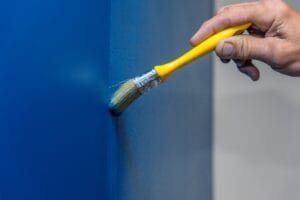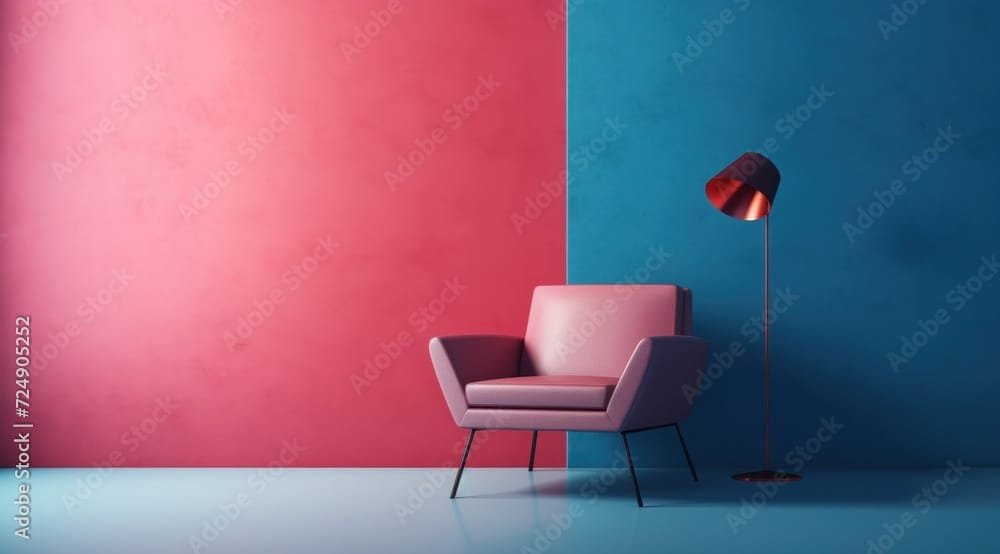Introduction to Decorative Texture
Mithila Paints, also known as Madhubani art, originates from the Mithila region of Bihar, India. This traditional art form boasts a rich historical significance that dates back to ancient times, with roots entrenched in local folklore and mythology. Artists have been painting the walls of their homes as a means of not only personal expression but also to narrate stories that reflect the socio-cultural backdrop of their community. The intricate designs and vivid colors are not merely decorative but convey deep meanings, often related to themes of nature, deities, and rituals.
The artistry involved in creating Mithila paints is a meticulous process, traditionally undertaken by women of the region. They utilize natural pigments derived from plants, minerals, and even cow dung, which lends an authentic charm to the artwork. Artists employ a variety of techniques such as fine line work, patterns, and use of symbols, giving unique identities to their creations. In this creative process, the emphasis on detail and vibrant colors contributes to a visually stimulating experience, encapsulating centuries of culture and creativity within the confines of each piece.
Over time, the techniques of Mithila painting have evolved to integrate more contemporary elements, particularly the introduction of decorative texture finishes. These finishes not only enhance the aesthetic appeal but also create tactile experiences that resonate with modern sensibilities. This fusion of traditional methods with innovative approaches broadens the scope of Mithila art, allowing it to traverse beyond the geographic confines of Bihar, reaching a global audience. Mithila paints, with their textured finishes, distinctly reflect a blend of history and modernity, making them highly sought-after in contemporary decors.
Understanding Decorative Texture Finishes
Decorative texture finishes represent a fascinating category within the realm of visual art, particularly in the context of Mithila paints. Texture, in artistic terms, refers to the surface quality or feel of a painted object, which can significantly alter the visual and tactile experiences of the viewer. When applied thoughtfully, decorative texture finishes can enhance the richness and complexity of a piece, inviting engagement and interaction. Within Mithila painting, this technique is not just an aesthetic choice but also a means of storytelling and cultural expression.
Different types of texture finishes can vary widely in their approach and effects. For instance, a smooth finish may convey elegance and simplicity, whereas a rough or uneven surface could suggest a natural, organic quality. Mithila artworks often incorporate intricate patterns and designs, which can be accentuated through various textural approaches. By using natural elements, such as grains and fibers, artisans can create tactile layers that not only attract the eye but also invite touch. This depth in texture allows for a multi-dimensional interaction with the art, making it more immersive.
Additionally, the application of decorative texture finishes can significantly impact the aesthetic appeal of a piece. The interplay of light and shadow on textured surfaces can create dynamic visual effects, transforming the way a painting is perceived depending on the angle and intensity of light. In Mithila art, where symbolism and color are paramount, texture serves as a complementary element, enhancing the overall narrative. Whether achieved through layering paint, embedding natural materials, or utilizing traditional tools, these textures encapsulate the cultural richness and historical significance of Mithila painting, reinforcing its place in contemporary artistic discourse.
Traditional Techniques Used in Mithila Paints
Mithila painting, a traditional art form originating from the Mithila region of Bihar, India, employs a range of ancient techniques that have been passed down through generations. Central to these techniques is the use of vibrant, natural colors derived from locally sourced materials. The artisans typically extract dyes from plants, flowers, and minerals, offering an eco-friendly alternative to synthetic pigments. This practice not only enhances the authenticity of the paintings but also imbues them with a unique texture that is integral to their aesthetic appeal.
The application methods used in Mithila painting are distinct and deeply rooted in tradition. Artists often employ simple tools such as fingers, brushes made from twigs, or bamboo sticks, which allow for intricate designs and fine details. The process usually begins with a base layer of mud or cow dung, which is meticulously crafted to provide a textured surface. This foundational layer not only supports the artwork but also acts as a natural adhesive, ensuring that the colors adhere effectively.
Furthermore, the art of Mithila painting is characterized by its meticulous detailing. Designs are often outlined first in black, using natural black dyes, followed by the filling of vibrant colors. The combination of intricate patterns and rich textures reflects the cultural heritage and stories that are often depicted in the artworks. The tradition also emphasizes the significance of themes drawn from mythology, folklore, and daily life, ensuring that each piece resonates with historical context.
Preserving these traditional techniques is paramount, especially in the face of rapidly changing artistic expressions. As modern decorative painting evolves, it is crucial to maintain the authenticity and cultural significance of Mithila artworks. By incorporating age-old methods, contemporary artists can create a fusion that honors tradition while appealing to current aesthetics, ensuring that the legacy of Mithila painting continues to thrive in today’s artistic landscape.
Modern Innovations in Mithila Decorative Textures
Mithila painting, a traditional art form originating from the Mithila region of India, has witnessed significant evolution in recent years. Contemporary artists and manufacturers are increasingly exploring modern innovations in decorative textures and finishes that merge traditional techniques with modern sensibilities. This fusion of old and new enhances the aesthetic appeal and functionality of Mithila artworks, making them relevant in today’s design landscape.
One notable advancement in Mithila decorative textures is the use of innovative tools and materials. Traditionally, these paintings were created using natural pigments and handmade brushes. However, contemporary artists have begun to incorporate synthetic textures and novel application techniques. Sprays, stencils, and digital tools are now being utilized to create intricate designs that retain the essence of traditional Mithila art while offering enhanced durability and versatility.
Another significant area of innovation lies in the choice of mediums. Beyond canvas and paper, artists are experimenting with various surfaces, including textiles, ceramics, and even plastic. This expansion allows for a broader range of decorative finishes, catering to diversified consumer preferences. For instance, Mithila-painted textiles are gaining popularity as unique home decor items, merging functionality with artistic expression. Furthermore, the rise of eco-friendly materials aligns with the increasing consciousness around sustainable practices, allowing artists to maintain ethical standards while innovating.
Moreover, collaborative projects between artists and manufacturers are paving the way for groundbreaking concepts in Mithila decorative textures. Initiatives that encourage cross-disciplinary partnerships have led to the development of new products that combine traditional artistry with modern design elements. As these collaborative efforts continue to flourish, they serve to expand the boundaries of Mithila art, ensuring its vibrant presence in contemporary spaces.
Benefits of Using Mithila Paints for Decorative Finishes
Mithila paints, with their rich historical roots and vibrant colors, offer a multitude of benefits when used for decorative finishes. One of the most significant advantages is their environmentally friendly nature. Unlike many conventional paints that contain harmful chemicals and toxins, Mithila paints are derived from natural materials. The base ingredients, which often include cow dung, clay, and natural dyes, ensure that these paints are not only safe for indoor air quality but also significantly minimize environmental impact. This makes Mithila paints an excellent choice for eco-conscious consumers looking to enhance their interior design with sustainable materials.
In addition to their ecological benefits, Mithila paints are renowned for their vibrant color palette. The natural dyes used in these paints produce stunning hues that enhance the aesthetics of any space. The brightness and depth of the colors can elevate a simple room, transforming it into a work of art. Home decorators and interior designers often choose Mithila paints to create focal points or to accentuate specific areas within residential and commercial spaces. This versatility also allows for seamless integration into various design styles, from modern minimalism to traditional decors.
Furthermore, Mithila paintings bear a rich cultural significance that resonates with many people. The art form itself is derived from the Mithila region of India, known for its unique styles and techniques. Incorporating Mithila paints into a home not only adds beauty but also tells a story of heritage and craftsmanship. As more individuals and businesses seek to make their spaces more meaningful, the cultural aspect of Mithila paints allows them to connect with their decors on a deeper level. This combination of sustainability, striking visuals, and cultural significance positions Mithila paints as an ideal option for decorative textures in interior design and home decors applications.
Application Techniques for Decorative Finishes
Applying Mithila paints for decorative finishes involves a methodical approach that enhances the overall aesthetic appeal of your projects. Whether you are a novice or an experienced DIY enthusiast, following these step-by-step instructions will help you achieve beautiful results. First, ensure that you select the appropriate surface to work on; walls, furniture, or canvas can all serve as excellent bases for Mithila designs.
Begin by preparing the surface. Clean the area of dust and debris, and if necessary, sand the surface lightly to promote better adhesion. Apply a suitable primer, allowing it to dry completely before proceeding. Primer is essential for creating a smooth canvas, ensuring that the Mithila paints adhere properly and the finished design remains vibrant.
Once the surface is prepared, gather your tools. You will need brushes of various sizes, sponges, and possibly stencils to achieve intricate designs associated with Mithila art. Select a palette of colors that complement one another, as well as a clear sealant for the final touch. A tip for beginners is to start with a light color as a base layer before adding more complex textures and tones.
For application, use a brush to outline your design lightly. Once the outline is complete, you can begin filling in the details with a combination of sponging and brushing techniques. Sponging creates texture and gives depth to the artwork. Consider layering colors to achieve the desired final appearance. Patience is key; allow each layer to dry before adding new colors to maintain clarity and prevent muddiness.
After achieving your preferred decorative texture, seal your work with a clear varnish. This protective layer will enhance durability and maintain the vibrancy of the Mithila paints, ensuring your decorative finishes stand the test of time.

Case Studies: Successful Projects with Mithila Textures
Mithila paints have significantly transformed numerous projects, illustrating their effectiveness in decorative texture finishes. One remarkable example is the restoration of a heritage site in Bihar, where architects sought to preserve the historic integrity while revitalizing its aesthetic appeal. The challenge was to blend modern techniques with traditional art forms. Utilizing Mithila paints, artists created intricate designs that not only highlighted the architectural features but also rejuvenated the local cultural narrative. The use of these decorative textures added depth and character, bringing the once-neglected site back to life.
Another compelling case is a contemporary residential project in Madhya Pradesh, where the homeowners desired a unique visual experience for their living space. The project aimed to incorporate eco-friendly materials while achieving an artistic flair. Mithila paints provided the perfect solution, as their vibrant colors and textural diversity enhanced the interiors. Facing the challenge of creating a cohesive design throughout the home, the team employed various textures from the Mithila range to distinguish different areas while maintaining a unified aesthetic. The final result was a stunning embodiment of modern and traditional design principles.
In an educational context, a school in Uttar Pradesh adopted Mithila textures to create an engaging environment for students. The objective was to inspire creativity and cultural appreciation among young learners. The main challenge was to implement these artistic elements without overwhelming the students or deviating from the educational purpose of the space. Careful planning allowed for the strategic placement of decorative finishes that complemented the learning environment. Mithila paints provided a visually stimulating yet conducive backdrop for educational activities, ultimately enhancing the overall student experience.
These case studies exemplify the versatility and impact of Mithila paints in various projects. Each instance not only highlights the innovative application of decorative texture finishes but also demonstrates how these solutions can address specific challenges while delivering impressive results.
Choosing the Right Manufacturer for Mithila Paints
When embarking on decorative projects that incorporate Mithila paints, selecting a reliable manufacturer is imperative. A quality supplier can ensure that the paints not only adhere to traditional methods but also meet modern standards of durability and vibrancy. One of the primary factors to consider is the quality of the paints being offered. High-quality Mithila paints are typically made from natural ingredients that maintain authenticity and provide a rich visual appeal. It is crucial to evaluate product samples and check for certifications that validate the quality of the materials used.
Authenticity is another significant criterion in the selection process. Considering the cultural heritage associated with Mithila paintings, it is essential to choose a manufacturer that respects and preserves traditional techniques. Look for manufacturers who are transparent about their production processes and those who employ skilled artisans familiar with Mithila art. This ensures that the spirit of the art form is maintained, resulting in paints that genuinely reflect the essence of Mithila culture.
Reputation plays an important role in guiding your selection. Researching reviews, testimonials, and seeking recommendations from fellow artists or decorators can provide insights into a manufacturer’s reliability and service. A reputable manufacturer often has a track record of satisfied customers and consistent product quality. Additionally, customer service should not be overlooked. A manufacturer that is responsive and provides timely support can greatly enhance the purchasing experience, offering assistance with product selection and resolving any potential issues.
By considering factors such as quality, authenticity, reputation, and customer service, readers can make informed choices when sourcing Mithila paints for their decorative projects. The right manufacturer can significantly impact the success of a project, ensuring that results are both visually appealing and culturally respectful.

Conclusion and Future Outlook for Mithila Paints
In recent years, the significance of decorative texture finishes in Mithila paints has become increasingly pronounced. These intricate and vibrant designs not only reflect the rich cultural heritage of the Mithila region but also showcase the evolving artistry associated with this traditional form of painting. Decorative texture finishes serve to enhance the aesthetic appeal of various surfaces, making them a desirable choice for both residential and commercial settings.
Balancing tradition and innovation is vital for the continued relevance of Mithila paints in contemporary markets. As artisans and manufacturers embrace modern techniques and materials, they simultaneously honor the time-honored practices that have characterized Mithila art for generations. By incorporating new textures, colors, and mediums into Mithila paintings, artists can reach a broader audience while maintaining the authenticity that defines this unique craft.
Looking ahead, several trends in the Mithila painting industry suggest exciting developments on the horizon. The increasing integration of technology into art production—such as digital tools and online platforms—will likely pave the way for greater visibility and accessibility of Mithila paints. Moreover, as global interest in artisanal products continues to rise, there is potential for Mithila artworks to gain recognition in international markets, fostering cultural exchange and appreciation.
Furthermore, sustainability is anticipated to become a central theme in the future of Mithila paints. As environmental consciousness grows, more artisans may adopt eco-friendly materials and practices, ensuring that the craftsmanship of Mithila remains not only vibrant and dynamic but also aligned with contemporary values.
In conclusion, the journey of Mithila paints is marked by a delicate interplay between tradition and innovation. The potential for future growth in this sector is significant, reflecting both a commitment to preserving the cultural legacy of Mithila and a forward-looking vision that embraces change. This balance will undoubtedly propel the artistry of Mithila paints into new realms of creativity and appreciation.


